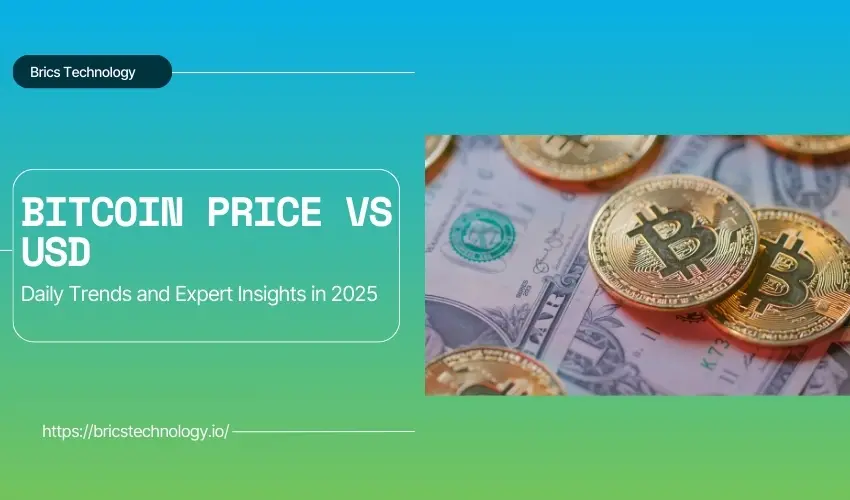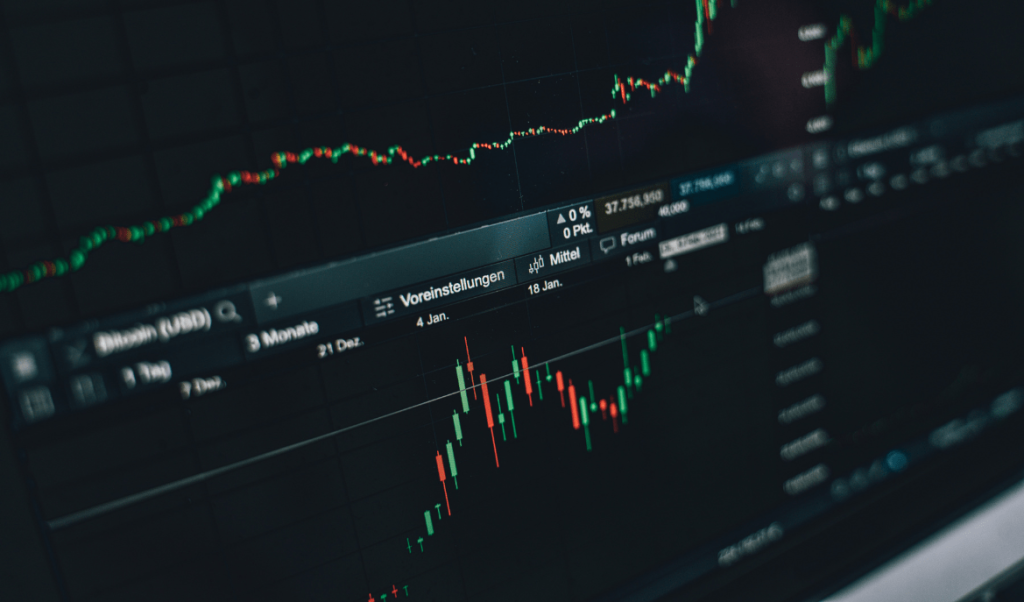Bitcoin Price vs USD: Daily Trends and Expert Insights in 2025

Bitcoin has experienced a remarkable journey. It has evolved from a niche digital experiment to a mainstream financial asset. It is decentralized and has a limited supply of 21 million coins. These unique features attract investors who are looking for alternatives to traditional currencies.
As of December 20, 2024, the price of Bitcoin today against the USD stands at approximately $96,574. The significant growth shows its growing acceptance and interest of investors in cryptocurrencies.
The introduction of Bitcoin ETFs and its increasing adoption by institutions and industries have further solidified Bitcoin’s position in the financial ecosystem. As we approach 2025, the critical question remains: What lies ahead for Bitcoin’s price in USD?
Bitcoin vs USD has been a hot topic for investors and analysts alike. Analysts and experts offer varied predictions with some forecasting values exceeding $150,000. Understanding Bitcoin’s historical performance and future prospects is essential for investors before investing.
The Current Value of Bitcoin

As of today, Bitcoin holds immense value in the financial market. As of December 2024, its price is fluctuating around $96,574 USD. But how much is a Bitcoin worth, and what factors drive its valuation?
Bitcoin is not like the fiat currencies. It operates on a decentralized network that makes its price heavily reliant on market demand, mining difficulty, and global adoption. Its limited supply is the major factor that drives its value.
For smaller transactions, 0.0002 BTC to USD is about $19 at current rates, showing how divisible Bitcoin is for micro-payments.
Another major factor that influences Bitcoin’s value is its role as a hedge against inflation. The traditional currencies are losing their purchasing power due to excessive printing. Bitcoin offers an alternative store of value. One thing that is critical for investors is its price volatility.
Fast Fact: “In 2010, 10,000 Bitcoin could buy two pizzas; in 2025, 10,000 Bitcoin to USD would be nearly $1 billion!“
BTC Technical Analysis

If you want to understand Bitcoin’s price fluctuation, you need a thorough BTC technical analysis. It is a method used to trade BTC to predict future trends based on historical data. By analyzing charts and price patterns, analysts can gain insights into potential price directions.
For example, when Bitcoin recently touched $100,000 USD it showed bullish momentum. However, the current correction phase indicates a potential retracement. It highlights the importance of closely monitoring support levels.
Advanced traders monitor bitcoin options expiry price analysis to anticipate volatility around major contract expirations, which can affect spot prices in the short term.
BTC technical analysis also helps identify market sentiment. For example, the formation of a golden cross. It happens when the 50 day moving average crosses above the 200 day moving average. On the other hand, continuously decreasing volumes may indicate decreased buyer interest.
Traders often use Fibonacci retracement levels to pinpoint key entry and exit points. This happens especially in volatile markets. These tools help investors to make informed decisions.
Smart Tip:
“If you want to withdraw Bitcoin to a bank account, most exchanges let you sell BTC for USD and transfer the funds.”
Why is Bitcoin Dropping?
Bitcoin’s price often experiences dramatic swings, and sudden drops can make new and experienced investors uneasy. So, why does Bitcoin drop? The answer usually comes from market psychology, external news, and broader economic conditions. When big investors sell off large amounts of Bitcoin, it can trigger panic selling among smaller holders, causing prices to tumble further.
Regulatory news is another major driver. Confidence can waver quickly if a country signals tighter crypto regulation or a central exchange faces issues. Broader economic worries, like inflation or stock market crashes, often push people to cash out riskier assets, including Bitcoin.
Sometimes, drops follow after a rapid price surge, as traders lock in profits. Remember, Bitcoin is still a relatively young, volatile asset; its price can react to headlines, market rumors, and global trends in ways that surprise even the experts.
USD vs Bitcoin 2025 Price Prediction

The relationship between Bitcoin and USD has always been a dynamic one. For 2025, experts foresee significant price shifts for Bitcoin. There are many predicting that Bitcoin can hit a range of $120,000 to $180,000 USD.
This optimism is because of Bitcoin’s increasing use case as a global currency and competition with USD in cross-border transactions. Major companies are integrating Bitcoin into their payment systems and its dominance is growing continuously.
Some predictions suggest that economic uncertainties and policy shifts in the United States can influence Bitcoin’s price in USD. For example, if inflation persists and the USD weakens, Bitcoin might become even more appealing as a hedge.
The latest bitcoin price prediction Jan3 CEO commentary suggests Bitcoin could easily break past $150,000 in the next bull cycle.
On the other hand, tighter regulations or a strengthening USD due to economic recovery can temper Bitcoin’s growth. Despite the Bitcoin vs USD war, both currencies will continue to be at the heart of financial discussions.
Bitcoin Price vs USD: Historical Trends and Lessons for the Future
It is important to examine historical trends to understand Bitcoin’s potential against the USD. Since its launch, Bitcoin has outperformed the dollar in terms of returns and experienced exceptional growth.
USD still remains the dominant global reserve currency. But Bitcoin’s decentralized nature is convenient for many. It offers a decentralized economic system that appeals to those who are looking for an escape from centralized financial systems.
For example, Bitcoin’s rise from less than $1 to its all-time high of $110,00 demonstrates its ability to generate unmatched returns. Most importantly during the periods of economic uncertainty when USD faced inflationary pressure.
However, historical events also suggest that Bitcoin is volatile as compared to relatively stable USD. Price crashes like the one following the 2017 bull run is a strong reminder of the risks involved in cryptocurrency investments.
But one thing is for sure that, despite these fluctuations, Bitcoin’s long term upward success suggests that its value proposition remains intact.
What Can You Buy with Bitcoin?
Bitcoin isn’t just for holding and trading anymore. It is accepted by many businesses worldwide. Today, you can buy everything from electronics and gift cards to hotel bookings and flights with Bitcoin.
Major brands like Microsoft (for Xbox credits), AT&T, and Overstock have allowed Bitcoin payments at various times. Travel companies such as CheapAir and Travala will also enable you to pay for flights and hotels using your Bitcoin balance.
Want to grab a coffee or a meal? Some local cafés and restaurants now accept Bitcoin, especially in crypto-friendly cities. You can even shop online using services like BitPay or CoinGate, which convert your Bitcoin into fiat at checkout for thousands of retailers.
From charity donations to subscription services, the list keeps expanding as digital payments become more mainstream. While Bitcoin adoption isn’t universal yet, it’s clear that its use as a real-world currency is growing every year.
Impact of Global Economic Policies

Global economic policies significantly impact Bitcoin vs USD dynamics. Whenever central banks implement quantitative easing or increase money supply, the USD often faces devaluation.
This inflationary environment has historically driven investors toward Bitcoin as a deflationary asset with a fixed supply. For example, during the pandemic, massive stimulus packages and rising inflation weakened the dollar. It leads to a surge in Bitcoin’s price.
Contrarily, strict regulations that target cryptocurrencies may create difficulties for Bitcoin’s growth against the USD. Governments’ concerns over the loss of monetary control are likely to introduce policies to regulate or even restrict Bitcoin usage.
However, with increasing demand for decentralized financial solutions and Bitcoin’s growing acceptance as a legal asset, its role in the global economy continues to expand. It will continue to challenge the USD’s dominance in unprecedented ways.
| Aspect | Bitcoin | USD |
| Nature | Decentralized digital currency | Centralized fiat currency |
| Supply | Limited to 21 million coins | Unlimited, can be printed when needed |
| Backed by | Market demand and scarcity | Backed by U.S. government |
| Inflation resistance | Resistant due to capped supply | Prone to inflation |
| Price Stability | High volatility | Relatively stable |
| Adoption | Increasing globally for payments and asset building | Universally accepted as legal tender |
| Transaction fees | Takes minutes to confirm | Almost instant for most of digital payments |
| Energy use | High due to mining process | Low energy cost for production |
| Regulations | Varies country to country | Fully regulated by governments |
| Investment potential | High risk and equally high reward | Low risk and limited returns |
Advantages and Disadvantages
While both are globally accepted and are in trend, these two currencies cater different needs of the investors. Following are the advantages and disadvantages of both currencies to help you make an informed decision.
Advantages of Bitcoin
- Decentralization: This is the biggest advantage of Bitcoin that it operates without any centralized authority. It reduces the risk of government interference and manipulation.
- Inflation Resistance: Bitcoin is not unlimited and cannot be printed according to demand. It has a fixed supply of 21 million coins which makes it immune to inflation which USD often faces due to excessive currency printing.
- Global Accessibility: It enables fast, borderless transactions that makes it ideal for international payments.
- Transparency: All transactions are recorded on a public blockchain and ensure accountability.
- Investment Potential: Bitcoin delivers high returns but involves a risk of high volatility.
Disadvantages of Bitcoin
Bitcoin has the most significant challenge and that is its high price volatility. This thing makes it less predictable and less reliable as a stable source of returns. Prices can fluctuate in a very short period that can lead to potential losses for investors and traders.
Due to this volatility, it cannot be adopted as a practical currency for day-to-day transactions. Because the value can change even between the sale and purchase.
Another drawback that Bitcoin brings is the excessive use of computational energy. Mining the cryptocurrencies requires immense use of energy that leads to a lot of energy depletion and impose environmental threats. Bitcoin has faced criticism over this energy consumption, especially in today’s era where everyone is talking about climate change.
Although Bitcoin’s adoption is growing at a great speed but still its limited acceptance in several countries remains a big barrier. Many businesses still do not recognize Bitcoin as a valid payment method.
Advantages of USD
- Global Acceptance: The USD is a universally recognized and globally accepted currency. It facilitates many international trades and financial transactions between many countries.
- Stability: Its value remains relatively stable as compared to highly volatile Bitcoin that makes it a reliable medium of exchange.
- Liquidity: The USD is highly liquid and easily accessible. It is widely used in global financial markets.
- Governments Backing: It is supported by several countries of the world most importantly by the U.S. government.
- Strong Infrastructure: Comprehensive banking systems and regulatory framework ensure secure and efficient use of USD.
Above all, USD’s primary advantage is its global acceptance and status as the world’s reserve currency. This stability makes it a reliable medium of exchange and trusted worldwide.
Disadvantages of USD
Despite the stability that the USD has, it is still vulnerable to inflation. The centralized nature of the USD also raises concerns. The value of USD is strongly controlled by the Federal Reserve. It can manipulate interest rates to achieve economic goals.
Furthermore, dependence on USD as the global reserve currency creates risks for other economies. Because any policy change by the U.S. government can create a ripple effect worldwide.
Uses Cases: Bitcoin Price vs USD
Bitcoin and USD serve distinct yet overlapping roles. Bitcoin is often considered as digital gold. So, it is primarily seen as an investment asset and a hedge against inflation. Because of its decentralized nature, Bitcoin is used for cross-border transactions.
On the other hand, USD remains the currency of global trade and everyday transactions. It is used to trade between countries and to buy & sell daily goods.
Analysts suggest that if Bitcoin’s adoption continues to grow, it can replace USD sooner or later. Bitcoin price USD predictions for 2025 highlight its potential to complement rather than replace fiat currencies. It showcases how these two assets cater to different economic needs.
Bitcoin Price USD Prediction for 2025
The table below highlights Bitcoin’s projected price ranges, average price and potential return on investment (ROI) for each month in 2025. The predictions suggest a steady upward trend and significant growth in the middle months of the year, especially from April to August.
| Month | Predicted Range | Average Prediction | ROI Potential (%) |
| January | $104,746 – $129,956 | $115,434 | 35.21% |
| February | $128,684 – $132,812 | $130,618 | 38.19% |
| March | $128,484 – $140,530 | $136,075 | 46.22% |
| April | $137,665 – 159,324 | $155,304 | 65.77% |
| May | $155,472 – $168,364 | $163,434 | 75.18% |
| June | $166,512 – $174,077 | $169,437 | 81.12% |
| July | $154,220 – $165,914 | $159,795 | 72.63% |
| August | $155,755 – $177,384 | $170,769 | 84.56% |
| September | $150,377 – $162,304 | $154,263 | 68.87% |
| October | $131,017 – $151,212 | $142,086 | 57.33% |
| November | $137,905 – $158,686 | $152,029 | 65.11% |
| December | $134,528 – $153,848 | $142,835 | 60.07% |
Conclusion
The Bitcoin vs USD debate is a hot topic in today’s world when Bitcoin is growing at an unbelievable pace and people are talking about will it replace USD soon? USD still remains the accepted currency worldwide, however, Bitcoin has emerged as a powerful alternative that is challenging traditional currencies.
Looking beyond 2025, some analysts have bold bitcoin price prediction 2040, with projections ranging from $500,000 to several million per coin, depending on future adoption
Bitcoin’s decentralized nature and investment potential attract investors from around the world. On the other hand, the USD’s reliability, liquidity, and global dominance ensure its continued relevance in both personal and institutional transactions.
Going forward, predictions for Bitcoin price in USD suggest a promising trajectory. However, its energy consumption and price volatility remain major concerns.
Ultimately, the choice between Bitcoin and USD depends on individual goals and needs. For long-term growth, Bitcoin offers high risk but also brings chances of high returns. For everyday stability and seamless transactions, USD still is unmatched.
FAQs
Bitcoin’s price drops when major investors sell, negative news or regulations hit the market, or global economic uncertainty pushes people to cash out. Price volatility is expected in crypto and is often driven by investor sentiment and market trends.
On average, the Bitcoin network currently takes about 10 minutes to mine one block, which releases a set amount of bitcoins. However, due to the network’s difficulty and competition, it can take a single miner months or even years to mine a whole bitcoin.
Bitcoin mining profitability depends on electricity costs, mining hardware efficiency, and current Bitcoin prices. Mining can be profitable with cheap electricity and modern equipment, but rising competition and costs make it a tough business for many individuals.
You can use Bitcoin to purchase electronics, gift cards, travel bookings, services, and even food at some local spots. Many online retailers and companies now accept Bitcoin through payment processors.
Bitcoin’s price is influenced by supply, demand, adoption, and market sentiment. Due to its limited supply, many experts predict long-term growth, but short-term prices can be highly unpredictable and volatile.
With Bitcoin, you can buy everything from video games and hotel stays to charity donations and online subscriptions. Acceptance is growing, especially for digital and travel-related goods.
You can use a cryptocurrency exchange, a Bitcoin ATM, or peer-to-peer trading platforms to convert Bitcoin to cash. Most exchanges let you sell Bitcoin and withdraw the funds directly to your bank account.
Catagories
Recent Post
- Tired of Disconnected Systems? How Cloud Telephony + CRM Improves Efficiency
- Stealthly AI: Transforming AI Content into Authentic Human Text
- Why Weighted Grade Calculators Matter for Accurate Academic Planning
- Customize Your Phone Sound with a Free Online Ringtone Maker
- How to Use AI in Stock Trading for Smarter Decisions
